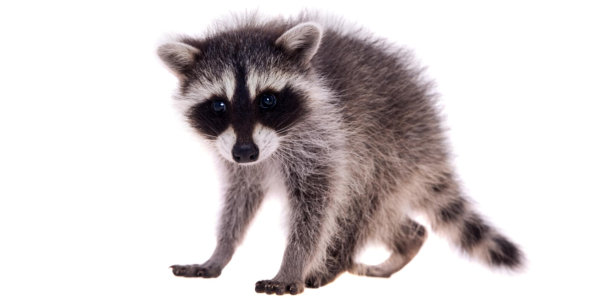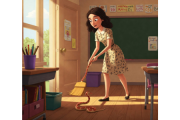The two girls knocked on the door, visibly upset. The 10-year-old tightly held the handle of a red bucket. In it were four curled-up balls of fur, instantly recognizable by their black masks.
“Baby raccoons!” I gasped.
“Please,” she half sobbed. “Can we put them in your wild space out back so they will be looked after by another mama? Theirs was scared away and now they’re all alone. And you’ve got to feed them. You know those eye-dropper things? You can feed them that way with some milk.”
These two young ladies were two of our beautiful grandchildren. The eldest is a student of Nature and all things wild and wonderful. The youngest listens carefully to her sister. The story they told was a tragedy to them. Apparently, their papa had begun to spring clean their yard when, to his surprise, after opening the storage box which held his gardening tools, he came face to face with one large and fierce-looking raccoon. Grabbing a broom, he shooed away the animal. Later, when he looked inside, he spied torn pieces of debris fashioned into a nest. Four furry little masked faces peered up at his strange face. Where was their mama?
Enter the red pail. Two little girls and their papa wearing protective gloves scooped up and placed the babies with some greenery into the pail. But where to take them? Of course, this was a Sunday and all manner of telephone calls for animal rescue went into voice mail. The idea of bringing them to our place was a no-brainer as far as they were concerned. We border a wild space where raccoons, rabbits, and similar furry animals frequent the many large trees and bushes. Maybe another mama raccoon would care for the four orphans? After considerable discussion, the consensus was to take the pail of baby critters back home and place it exactly where the shed stood. Mamas of every species always come searching for their babies.
The next morning, we received happy texts: all four babies had been furtively removed during the night by one mama raccoon who was probably exhausted by morning. The two girls were relieved and ecstatic.
Each of our three sons has experienced the bane and joy of living near a wild space. Another son is in his second spring of trapping a family of squirrels, one by one, in his home. After capturing them, he, with his two children, drives the excitable and trapped creatures to a faraway park where this second set of grandchildren release the furry babies and parents into the wild. The procedure takes four or five trips over as many days.
Our third son, father to three more of our grandchildren, lives in a wild space in northern British Columbia. They have shared stories of watching black bears, moose, and deer meander onto their property and of listening to coyotes howling at night. But their close encounter with one large packrat hiding under a wooden floor immediately caught the kids’ attention. After trapping the critter, they drove a considerable distance before releasing it into the wild. The last story they shared was that of the three of them mashed together in the master bedroom in the middle of the night trying to decipher the screeches of what turned out to be a fox’s mating call.
These wildlife encounters can be a nuisance to their fathers but a learning experience for the children. After all, we have over 700 species at risk here in Canada and according to the Canadian Wildlife Federation, our wildlife habitat continues to be lost faster than we can restore it. Environmental pressures are worsening. Yet our environment, our economy and our culture were founded on our relationship with wildlife and this is what our grandchildren are learning.





